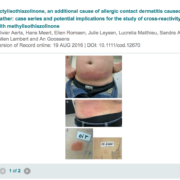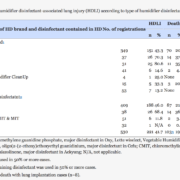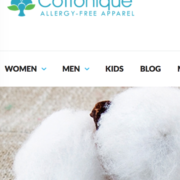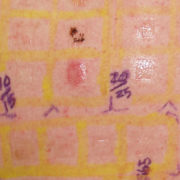Octylisothiazolinone! Anti-fungal on Leather!
Octylisothiazolinone, an additional cause of allergic contact dermatitis caused by leather: case series and potential implications for the study of cross-reactivity with methylisothiazolinone.
Abstract
BACKGROUND:
Octylisothiazolinone (OIT) (CAS no. 26530-20-1) is used as an antifungal agent by the leather industry.
OBJECTIVES:
To show sensitization to OIT from leather, and to highlight the potential implications when cross-reactivity between OIT and methylisothiazolinone (MI) is studied.
METHODS:
Two patients with allergic contact dermatitis caused by a leather belt and shoes, respectively, were patch tested with methylchloroisothiazolinone (MCI)/MI, MI, MCI, OIT, and benzisothiazolinone (BIT). High-performance liquid chromatography with ultraviolet detection (HPLC-UV) was used to detect isothiazolinone derivatives in leather goods. Additionally, files of OIT-sensitized patients, observed at the KU Leuven department during the period 1990-2015, were retrospectively analysed.
RESULTS:
Both patients had been primarily sensitized to OIT, but the diagnosis in 1 of them could be achieved only when a higher patch test concentration of OIT (1000 ppm pet.) was used. HPLC-UV confirmed the presence of OIT in their leather goods. Non-relevant sensitization to MI was noted in both cases. Four additional cases of OIT sensitization from leather could be retrieved from the KU Leuven database.
CONCLUSIONS:
Non-occupational sensitization to OIT from leather may occur. Patch test concentrations of >250 ppm pet. may be necessary for diagnosis, and to show cross-reactivity with MI. Safer use limits for OIT in the leather industry may be needed.
© 2016 John Wiley & Sons A/S. Published by John Wiley & Sons Ltd.
KEYWORDS:
CAS no. 26530-20-1; allergic contact dermatitis; biocide; cross-reaction; fungicide; high-performance liquid chromatography; leather; methylisothiazolinone; octylisothiazolinone; shoes
For more information:
http://onlinelibrary.wiley.com/journal/10.1111/(ISSN)1600-0536/earlyview




